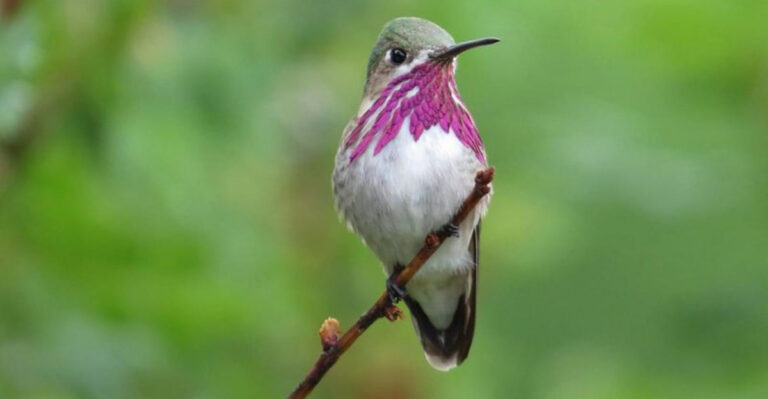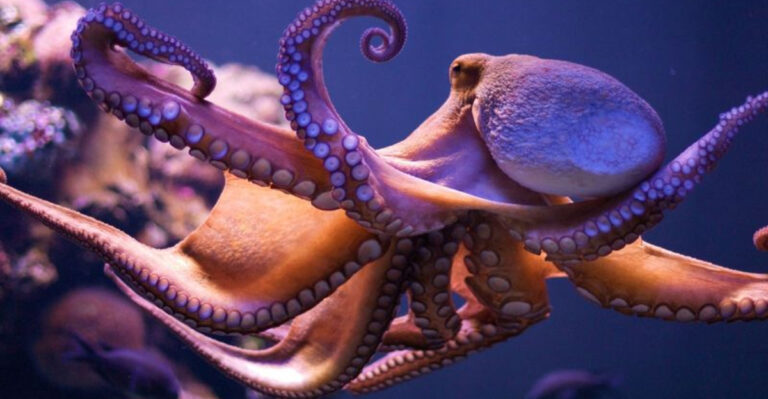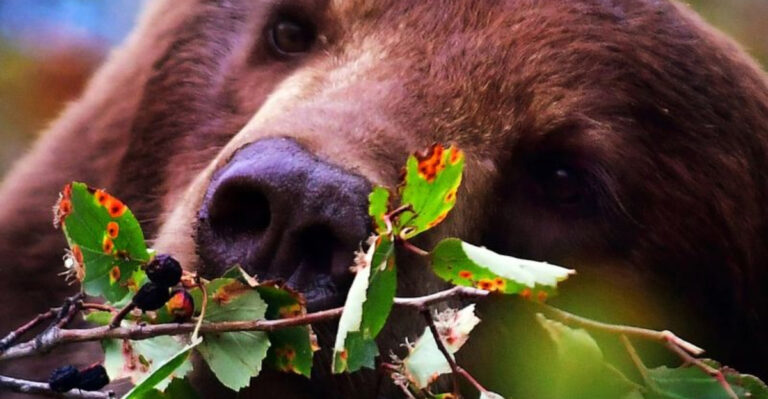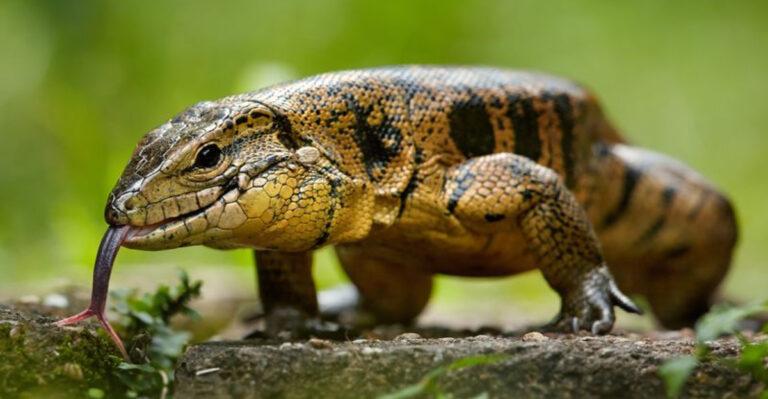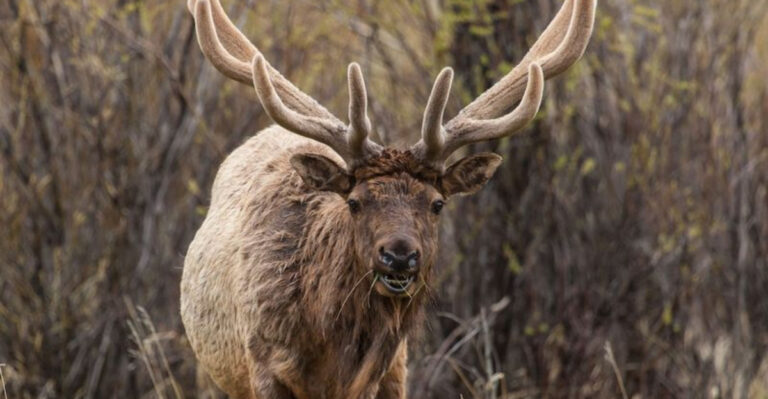32 Remarkable Animals That Master The Art Of Transformation
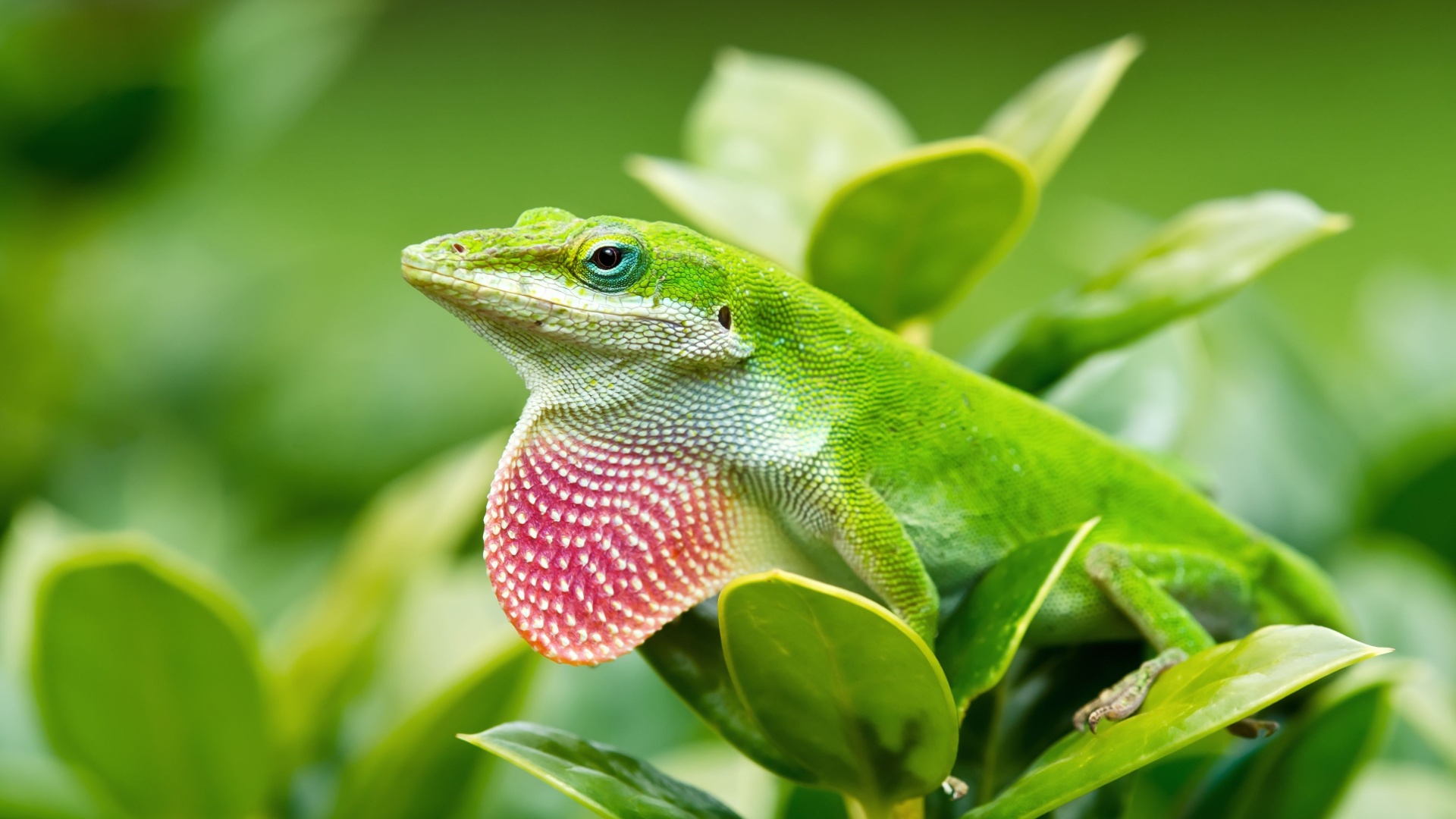
The animal kingdom is filled with creatures capable of breathtaking transformations. Some use these abilities for survival, others for attracting mates or intimidating foes.
From rapid color changes to shape-shifting abilities, these animals showcase nature’s creativity and adaptability.
Join us as we explore these fascinating creatures and their extraordinary talents, making the wild world even more intriguing and wonderfully unpredictable.
1. Surgeonfish
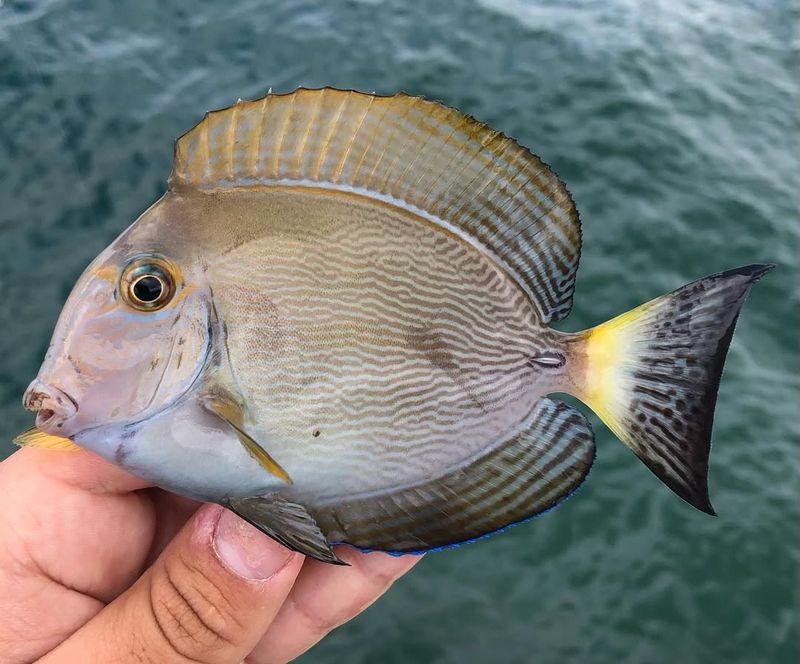
Surgeonfish, with their dazzling colors, are the underwater Picasso of the ocean realm. These reef dwellers are known for their sharp scalpel-like spines near their tails, which they use to ward off predators.
Their colors can shift like a mood ring, helping them communicate with other fish or blend into their surroundings.
This chameleon-like ability ensures they stay safe in the vibrant yet perilous world of coral reefs, where danger lurks at every turn.
2. Octopus
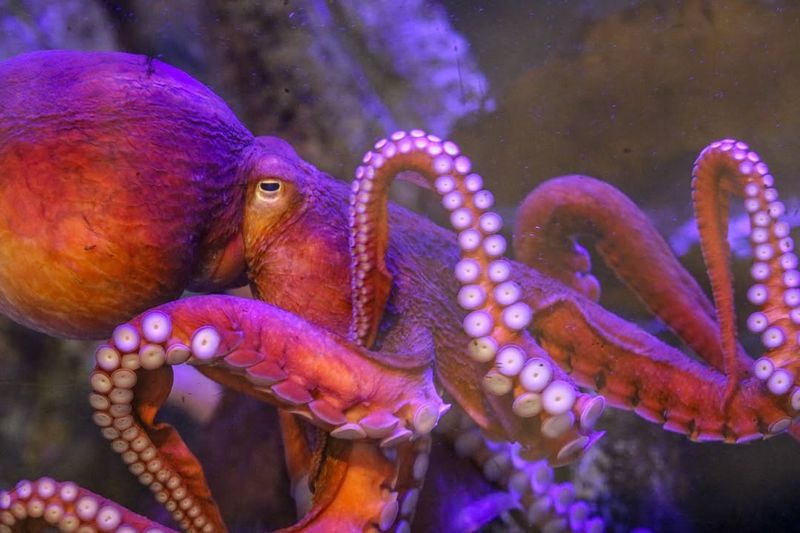
Octopuses are the Houdinis of the sea, with the unparalleled talent of changing both color and texture. This ability is thanks to specialized skin cells called chromatophores and papillae.
Whether they’re hiding from predators or sneaking up on prey, octopuses can vanish in plain sight. Beyond their camouflaging prowess, they’re notorious for their intelligence, using tools and solving puzzles.
An octopus’s life is a game of hide-and-seek, where its transformation skills are its ace up the sleeve, ensuring survival in the deep blue.
3. Anole Lizard
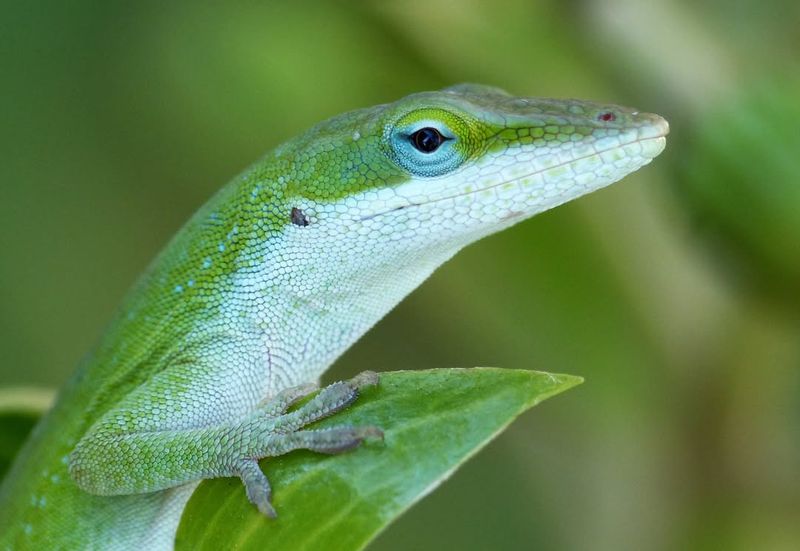
Nature’s little magician, the Anole Lizard, can change colors from bright green to dull brown, adapting to its environment or mood. This color shift acts like a reptilian mood ring, offering more than just a visual spectacle.
The transformation serves as a survival mechanism, helping it blend into surroundings to avoid predators. When threatened, the lizard puffs its throat to display a brightly colored dewlap, signaling a dramatic defense or attracting potential mates.
With such clever adaptations, the Anole Lizard proves itself a true survivor in the wild.
4. Seahorse
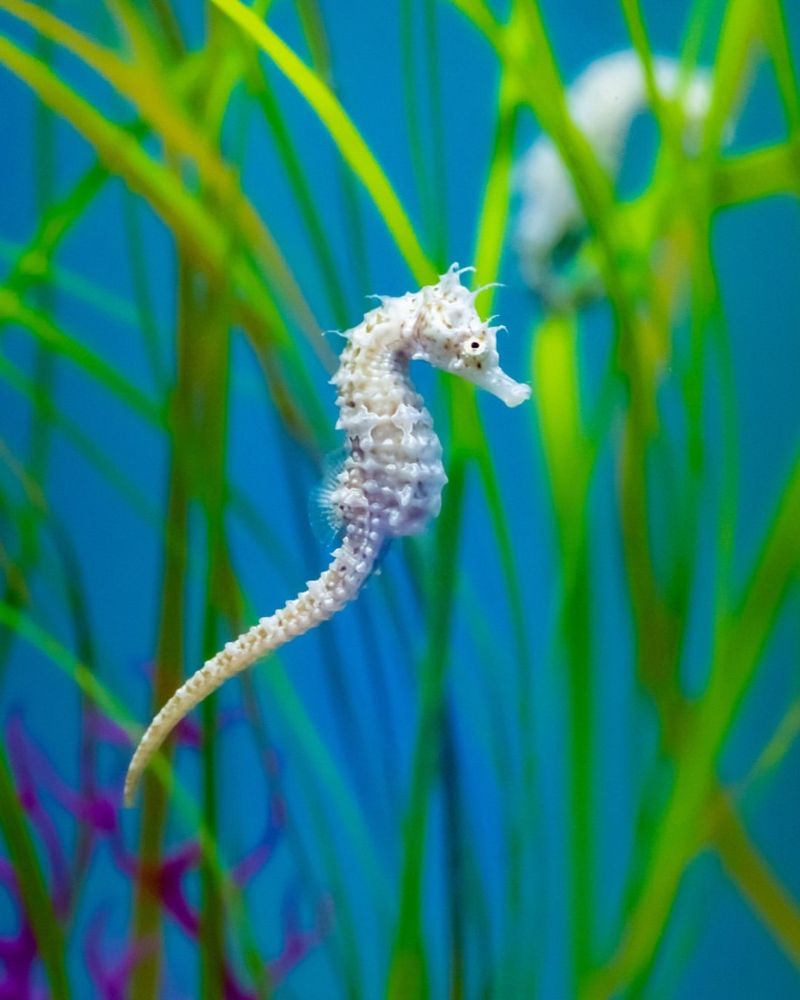
Seahorses are the poets of the sea, drifting gracefully with a flair for mimicry. With their slender, elongated bodies, they can change colors to match their surroundings, blending seamlessly into seagrasses or corals.
Male seahorses are the ultimate performers, not just in color but also in role reversal, being the ones to carry offspring.
This unique twist adds an extra layer to their transformative capabilities, making them enchanting performers in the aquatic ballet, where survival hinges on their masterful mimicry and unique parenting roles.
5. Butterflyfish
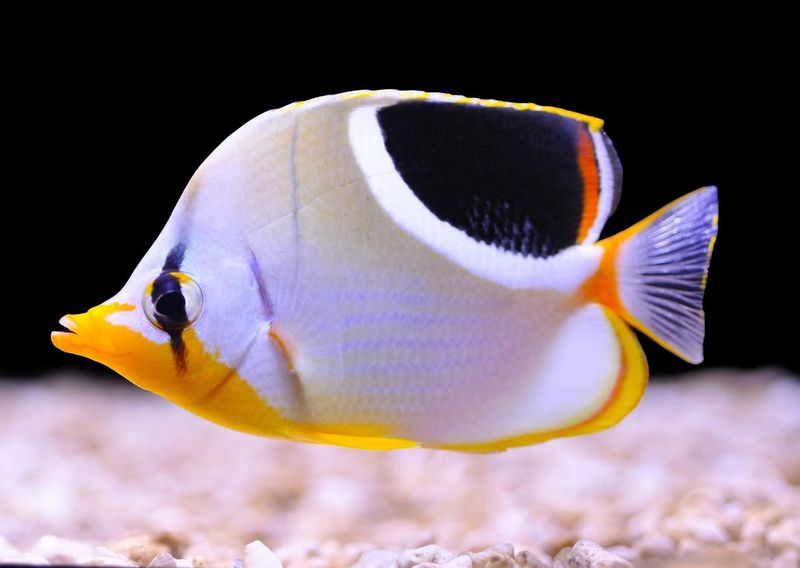
Butterflyfish glide through coral reefs like colorful kites, brandishing striking patterns and vibrant hues. Their eye spots near the tail can baffle predators, acting as decoys to protect their more vulnerable parts.
These fish are social butterflies, often seen in pairs as they perform synchronized swimming displays. Their ability to adapt to various coral reef environments showcases their resilience.
With such dazzling transformations, butterflyfish are nature’s artwork, creating a living tapestry beneath the waves, mesmerizing divers and marine life enthusiasts alike.
6. Parrotfish
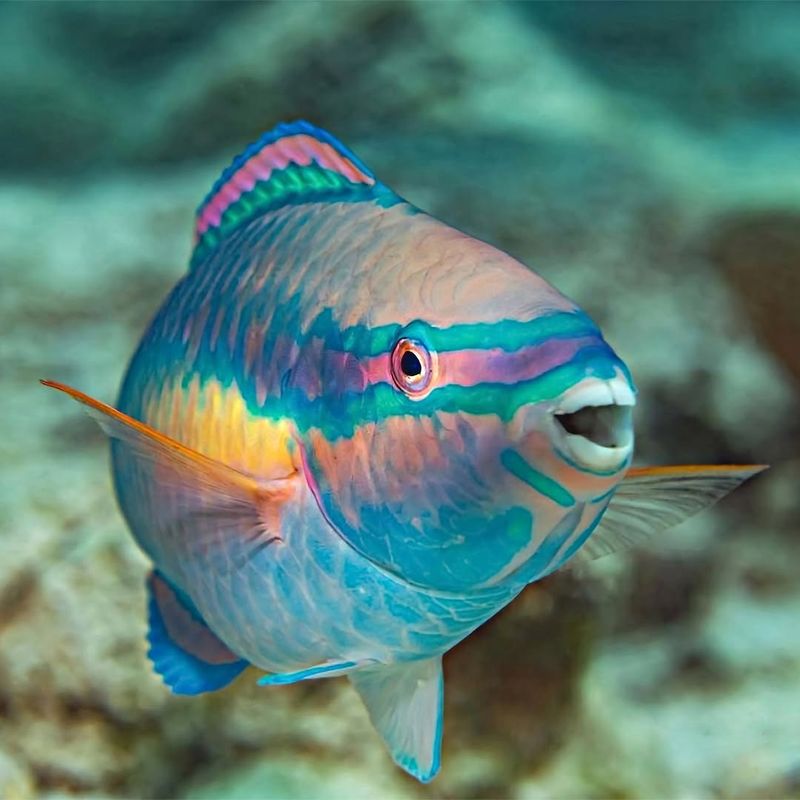
The multicolored Parrotfish are the artists of the reef, with scales that resemble a rainbow’s vibrant palette. Their strong beaks are used to scrape algae from coral, playing a crucial role in maintaining healthy coral reefs.
Parrotfish are also remarkable for their ability to change gender, transitioning from female to male, which aids in genetic diversity. While feeding on coral, they leave behind sand, acting as natural architects that shape the beaches.
This combination of beauty and functionality highlights how transformation serves both ecological and aesthetic purposes.
7. Hawkfish
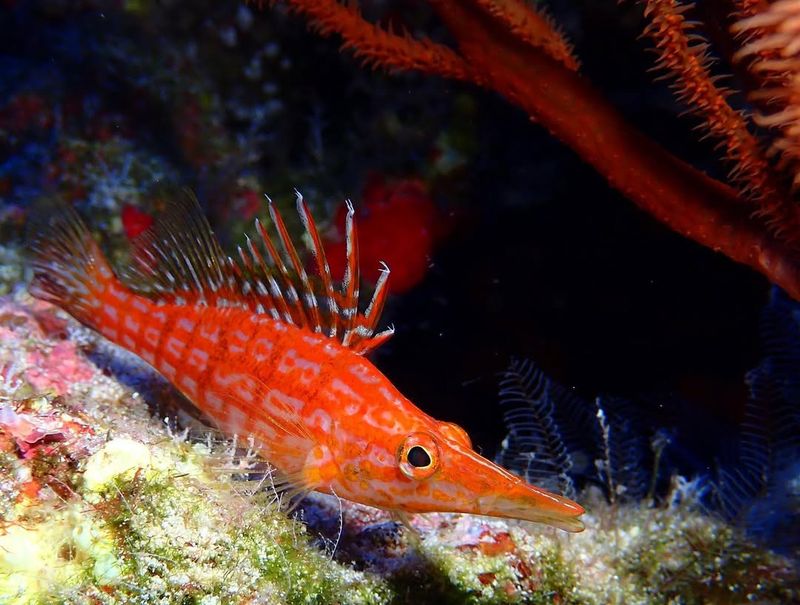
Known for their vibrant spots and stripes, Hawkfish are the watchful sentinels of coral reefs. Perched on coral branches, they survey their domain with keen eyesight, poised to pounce on unsuspecting prey.
Their striking coloration allows them to blend seamlessly into their surroundings, making them efficient hunters. Hawkfish also have a unique ability to change sex, a transformation triggered by social cues in their environment.
This adaptability ensures their survival, allowing them to thrive in the dynamic and bustling underwater world.
8. Peacock Flounder
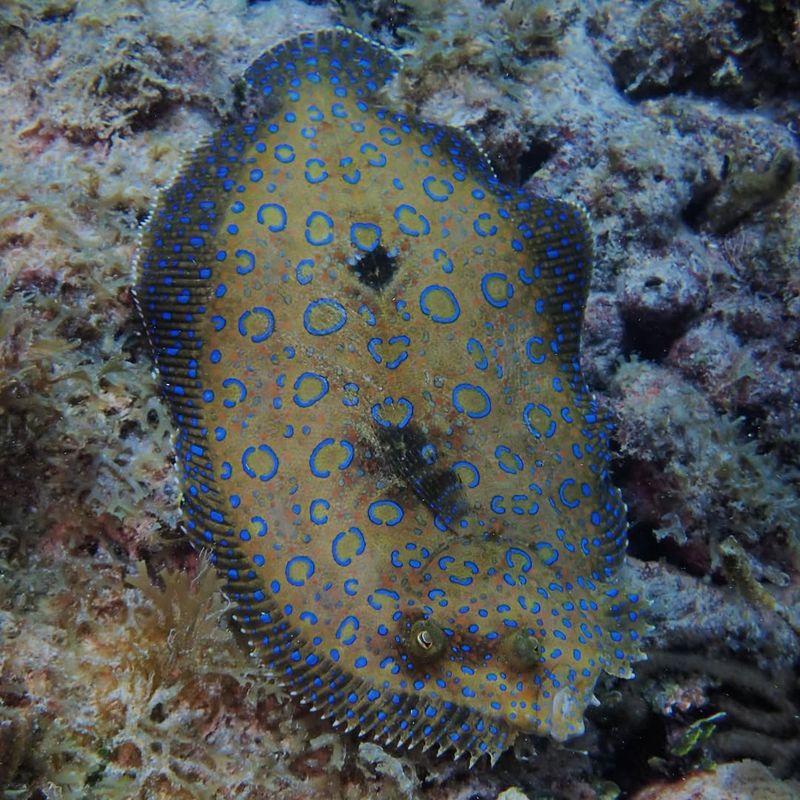
Peacock Flounders are the virtuosos of camouflage, able to mimic the ocean floor’s textures and colors with finesse. These flatfish lie so still that they become nearly invisible to both prey and predators, embodying the art of vanishing.
Their eyes can move independently, allowing them to scan the environment for food or danger. This quirky feature adds to their mystique and effectiveness as ambush hunters.
Living life flat on the seabed, the peacock flounder proves that transformation isn’t just about flash but can also be about subtlety and survival.
9. Moray Eel
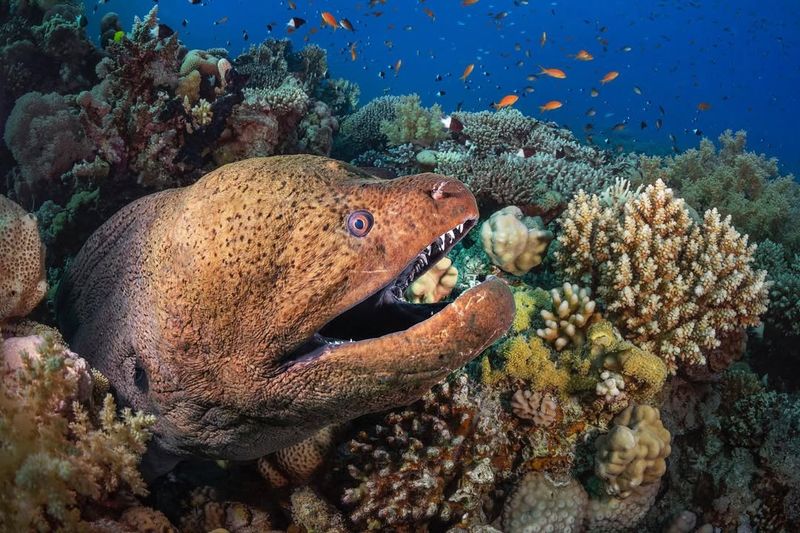
Moray Eels are the enigmatic phantoms of the reef, known for their snake-like bodies and menacing teeth. Emerging from crevices, they blend with the coral, becoming part of the scenery until it’s time to strike.
Their ability to change the color of their skin helps them stay hidden from both predators and prey. With the added talent of opening and closing their jaws for ventilation, they maintain an air of mystery.
Moray eels teach us that transformation isn’t always about movement; sometimes, it’s about stillness, patience, and precision.
10. Frog
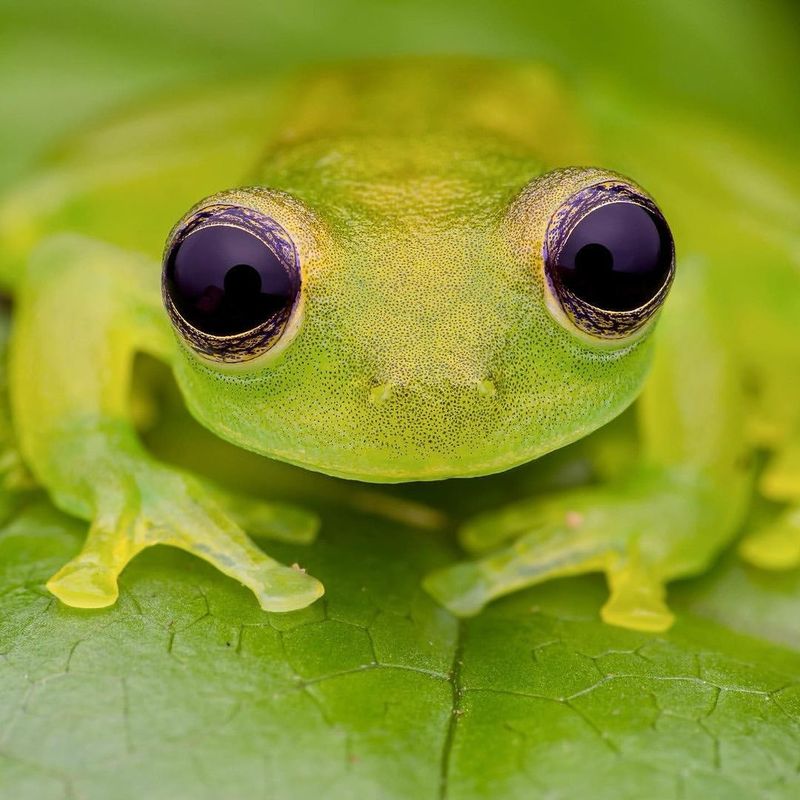
Amphibious acrobats of the natural world, frogs leap onto lily pads with incredible grace and flair. Their extraordinary transformation from tadpoles to adults is a metamorphosis that rivals any fairy tale.
With vibrant green skin, they blend into their lush surroundings, while their bulging eyes provide a 360-degree view to spot both danger and food. Frogs exemplify how transformation is an adventure of growth and adaptation.
Leaping through life with a splash of green, they show us the power of change and resilience.
11. Starfish
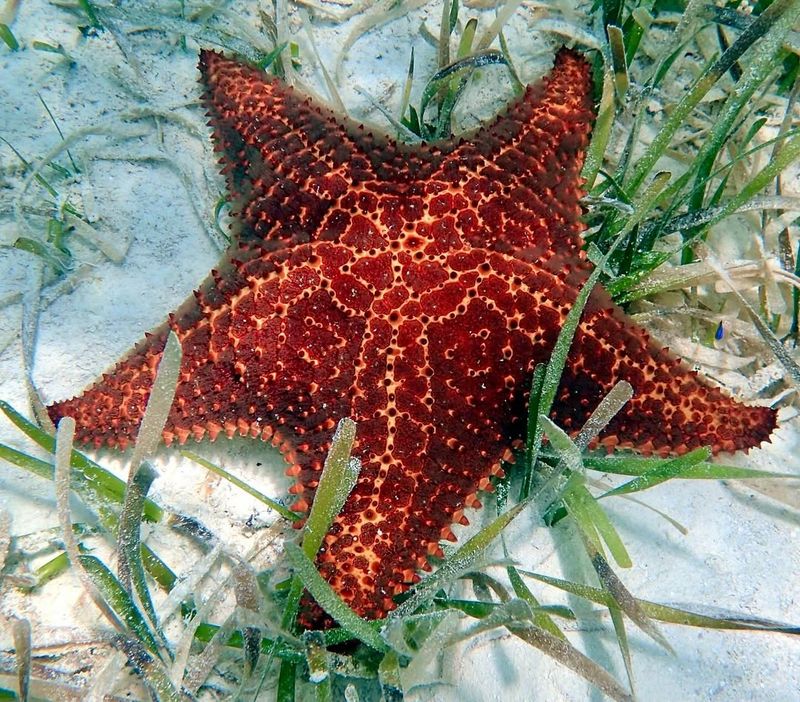
Starfish, or sea stars, are the celestial wonders of the seabed, with their iconic five arms and vibrant hues. These creatures are masters of regeneration, capable of regrowing lost limbs, a transformation that ensures their survival.
Their tube feet allow them to move gracefully across the ocean floor, while their ability to evert their stomachs to consume prey adds to their fascinating biology.
Starfish are a testament to nature’s incredible design, where transformation and resilience intertwine, creating a spectacle beneath the waves that never ceases to amaze.
12. Mimic Octopus
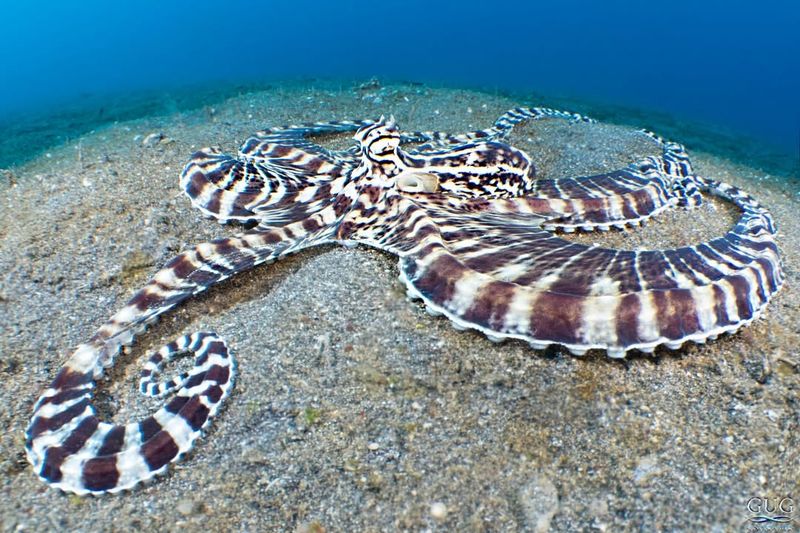
The Mimic Octopus is nature’s ultimate impersonator, capable of transforming its appearance to mimic other marine animals like lionfish or flatfish. Its repertoire of disguises serves as both a defense mechanism and a hunting strategy.
With a flexible, shape-shifting body and a keen intelligence, the mimic octopus can adapt to various environments, outsmarting both predators and prey.
In the theater of the ocean, this octopus takes on multiple roles, proving that when it comes to transformation, the world is indeed a stage, and it plays its part to perfection.
13. Weedy Sea Dragon
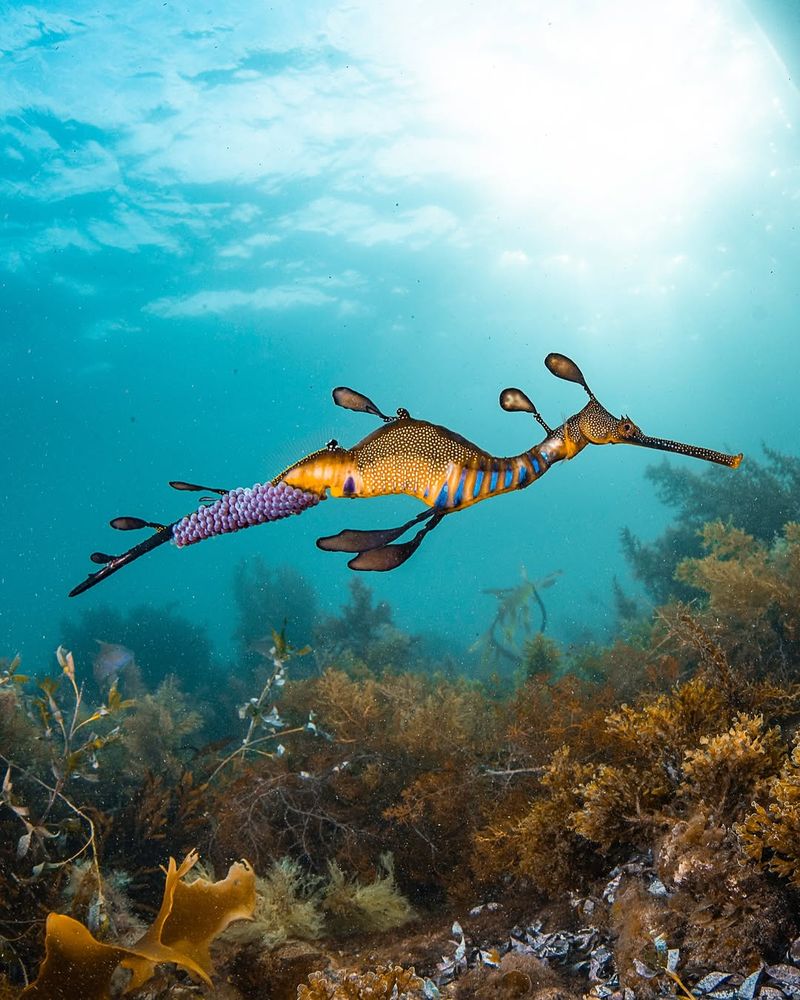
Weedy Sea Dragons are the whimsical nobility of the deep, with elaborate leafy appendages that resemble the seaweed they inhabit. This natural disguise allows them to avoid predators while drifting gracefully through the ocean.
Their vibrant colors and delicate features make them appear as if they’re straight out of a fantasy tale. Unlike their seahorse relatives, sea dragons lack a prehensile tail, relying solely on their camouflage for protection.
These aquatic illusionists demonstrate how transformation can be both beautiful and practical, blending elegance with survival beneath the waves.
14. Salmon
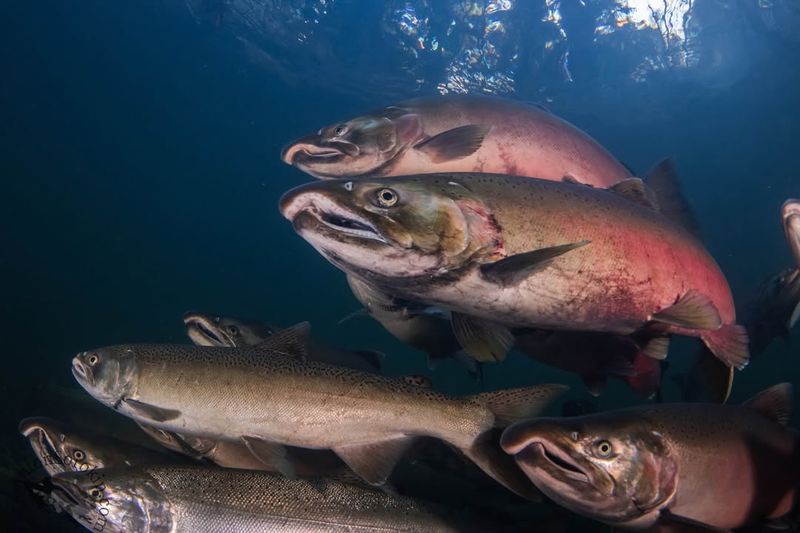
Salmon are the marathon swimmers of the aquatic world, embarking on epic journeys from ocean to freshwater rivers. Their transformation from silvery sea dwellers to vibrant spawning fish is a spectacle of nature’s orchestration.
During this migration, salmon undergo physiological changes, adapting to different water conditions. This challenging journey ensures the continuation of their species, as they return to their birthplace to spawn.
Salmon exemplify the transformative power of determination and instinct, navigating life’s currents with resilience, proving that transformation is as much about the journey as the destination.
15. Leafy Sea Dragon
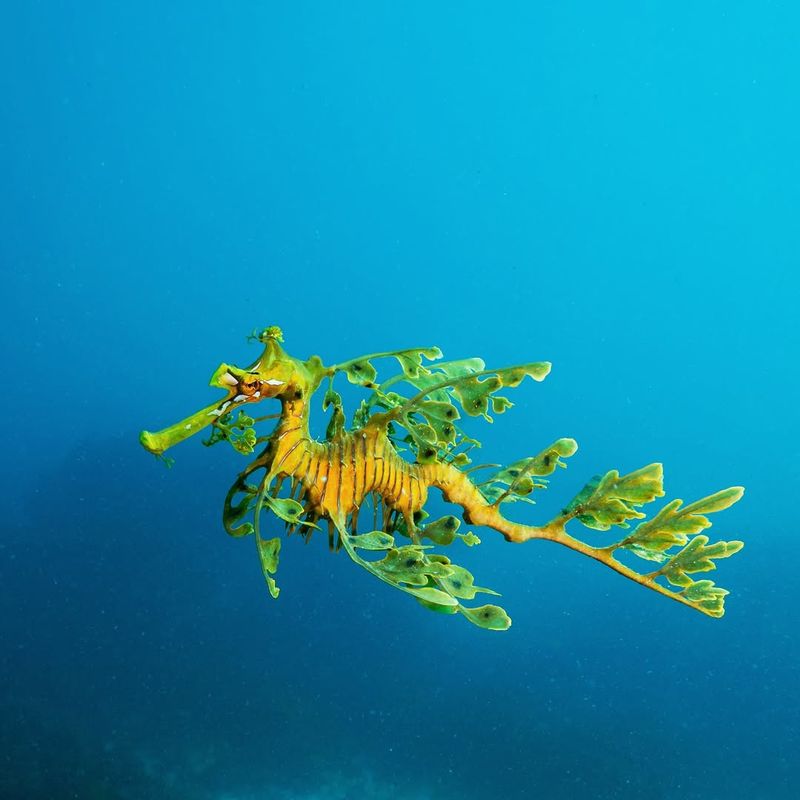
Leafy Sea Dragons are the royalty of disguise, their bodies adorned with leaf-like appendages that mirror the kelp and seaweed around them. This camouflage is their primary defense, allowing them to drift unnoticed through the ocean.
These sea dragons exhibit a slow, deliberate dance, moving gracefully with the currents. Unlike seahorses, they lack a prehensile tail, relying solely on their leafy disguise.
Leafy sea dragons remind us that transformation can be a gentle art, where beauty and function unite to create a masterpiece of survival in the aquatic world.
16. Flatworm
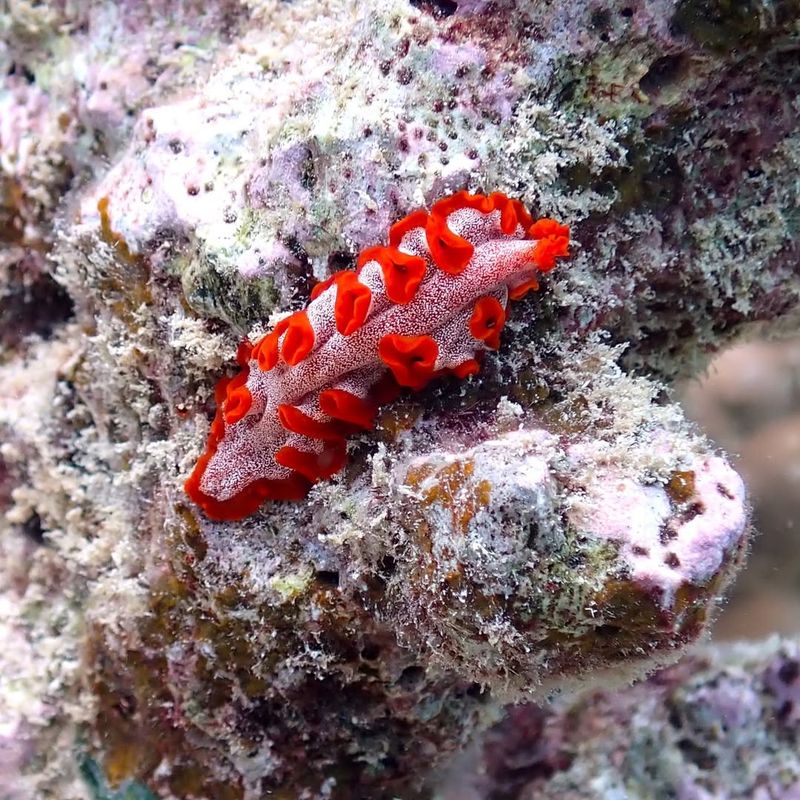
Flatworms glide elegantly across the reef, their flattened bodies adorned with vivid patterns that rival the brightest canvases. These creatures undergo a simple yet profound transformation from larva to adult, showing that complexity isn’t always necessary for effectiveness.
Their bright colors serve as a warning to predators about their potential toxicity, adding both beauty and caution to their appearance. By undulating their bodies, flatworms perform a mesmerizing dance that not only captivates but also alerts potential threats.
In the underwater realm, flatworms prove that transformation can be as simple as it is stunning, demonstrating the power of simplicity and beauty in survival.
17. Leaf Chameleon
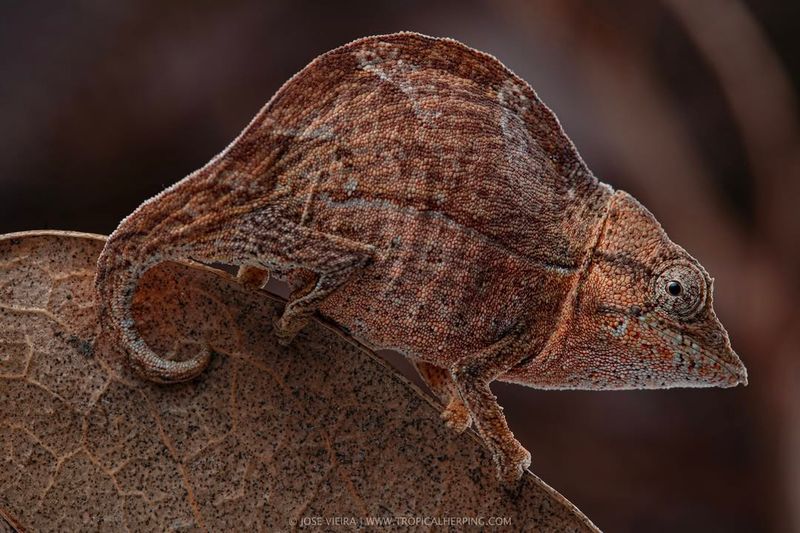
Leaf Chameleons are the miniature masters of disguise, with bodies that resemble leaves in both shape and color. These tiny reptiles can seamlessly blend into their forest habitats, avoiding predators with their leaf-like appearance.
Their transformation ability extends beyond camouflage; they can also change colors to communicate or regulate temperature.
In the intricate tapestry of the forest, leaf chameleons are the hidden gems, proving that transformation can be subtle yet powerful, a testament to nature’s ingenuity in the art of concealment and survival.
18. Clownfish
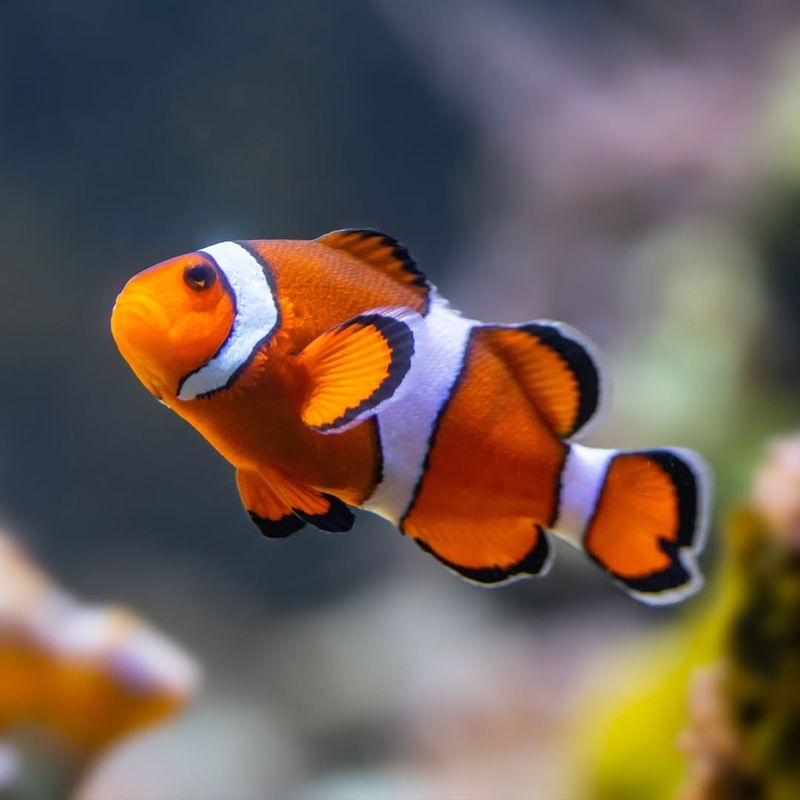
Known for their bright orange and white stripes, these charismatic comedians of the reef are a sight to behold. They form unique symbiotic relationships with sea anemones, using their slimy coating to avoid being stung.
Clownfish also have the remarkable ability to undergo gender transformation, switching from male to female as needed to ensure social balance. Their adaptability and humor make them a perfect fit for the colorful chaos of coral reefs.
In the underwater world, clownfish remind us that transformation is often about relationships and survival.
19. Piperfish
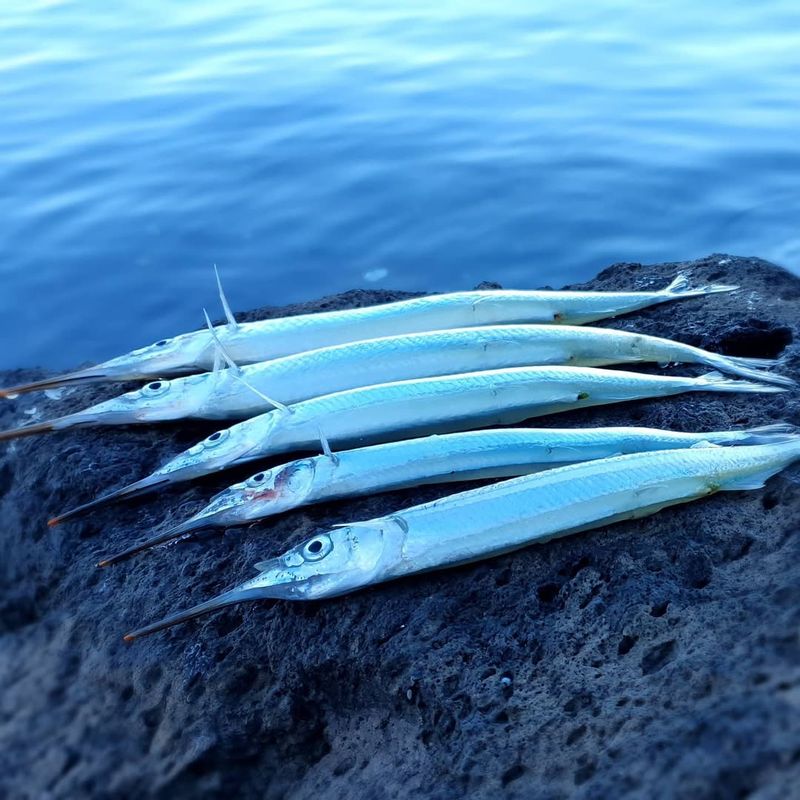
Piperfish are the slender performers of the sea, their elongated bodies perfectly camouflaged among seagrass and reeds. This disguise offers both protection and stealth in hunting small prey.
Their ability to blend into their surroundings showcases their evolutionary prowess, a transformation perfected over millennia.
Piperfish rely on their subtlety and patience, proving that in the underwater theater, sometimes the best transformations are those that escape notice, allowing them to play their role in the delicate balance of the marine ecosystem.
20. Nudibranch
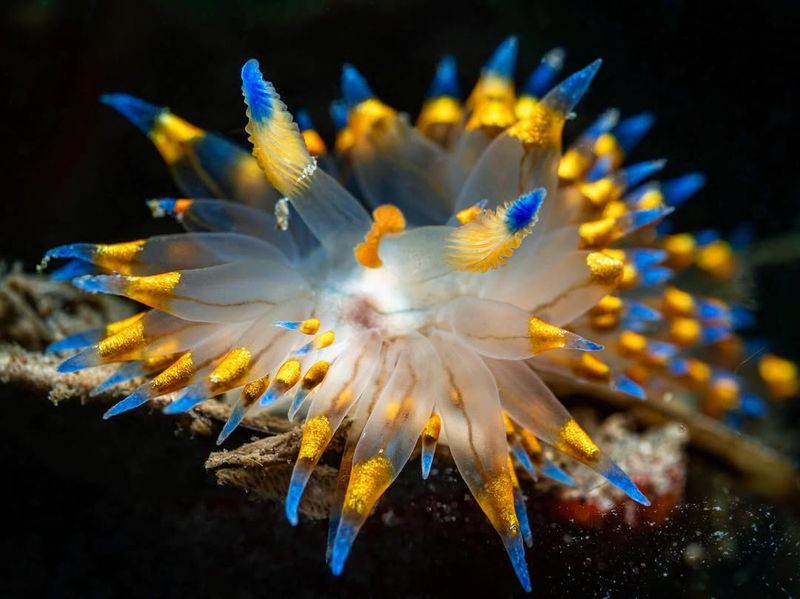
Nudibranchs are the flamboyant fashionistas of the ocean floor, their bodies adorned with colors and patterns that outshine the most extravagant wardrobes. These sea slugs undergo a dramatic transformation from larva to adult.
Their vivid hues serve as a warning to predators about their potential toxicity.
Nudibranchs remind us that transformation can be about making a statement, a vibrant proclamation of survival, and individuality in the sea’s vast tapestry, where each creature plays a unique and colorful role.
21. Chameleon

Celebrated shapeshifters of the reptile world, these creatures are renowned for their ability to change colors effortlessly. This transformation aids in communication, temperature regulation, and camouflage.
Their independently moving eyes offer a 360-degree view, helping them spot both predators and prey with ease. The chameleon’s color-changing skill is a remarkable display of nature’s artistry, a dance of adaptation that ensures their survival.
Chameleons remind us that transformation is a continuous journey of adaptation and evolution in the natural world.
22. Cuttlefish
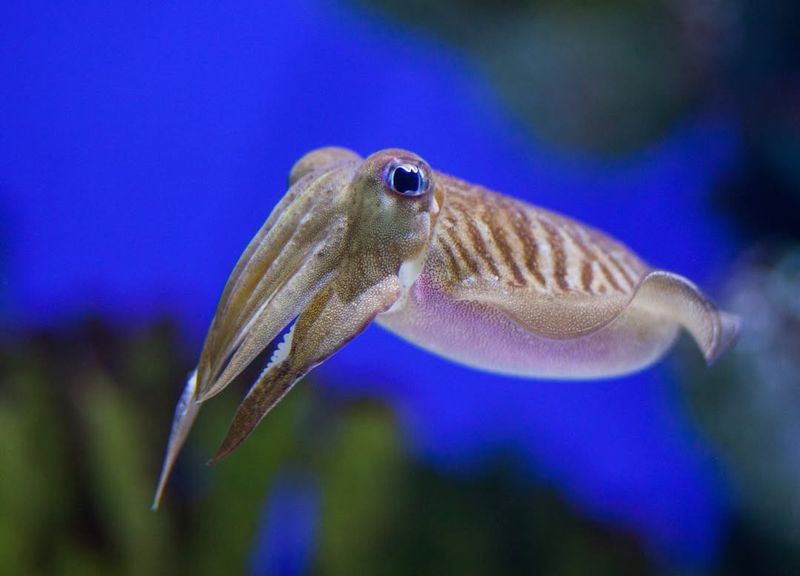
Cuttlefish are the hypnotic performers of the sea, known for their dynamic ability to change skin color and texture. With their advanced nervous systems, they can produce a dazzling array of patterns, mesmerizing both prey and divers.
These cephalopods use their transformation skills for communication, camouflage, and courtship. Cuttlefish remind us that transformation can be about connection and expression, a vivid dialogue with the world around them.
In the grand performance of the ocean, they are the artists, painting their stories in vibrant, ever-changing hues.
23. Flatfish
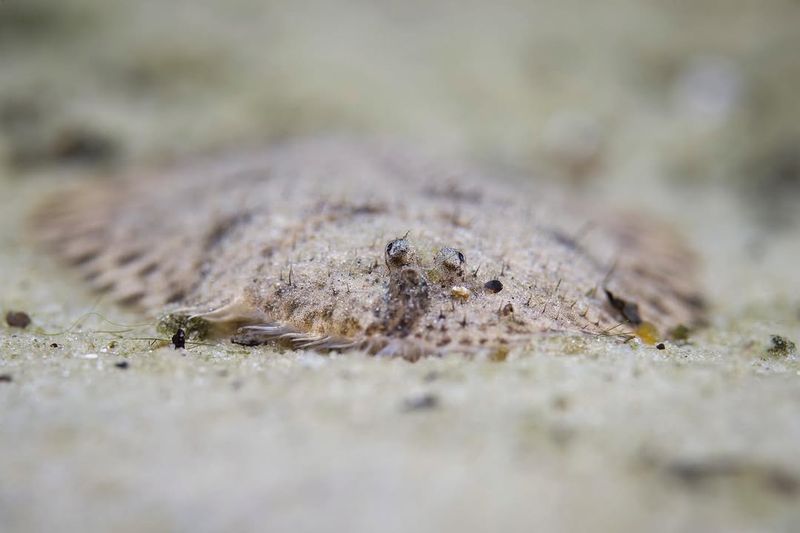
Flatfish are the stealthy sliders of the seabed, their bodies masterfully camouflaged against the sandy ocean floor. This transformation aids them in avoiding predators and ambushing prey.
Their journey from larva to adulthood involves a fascinating metamorphosis, where one eye migrates to join the other on their flattened body.
Flatfish exemplify the marvels of evolution, where transformation is both a survival strategy and a testament to nature’s creativity. In the quiet depths, they glide unseen, masters of the art of disappearing in plain sight.
24. Bluehead Wrasse
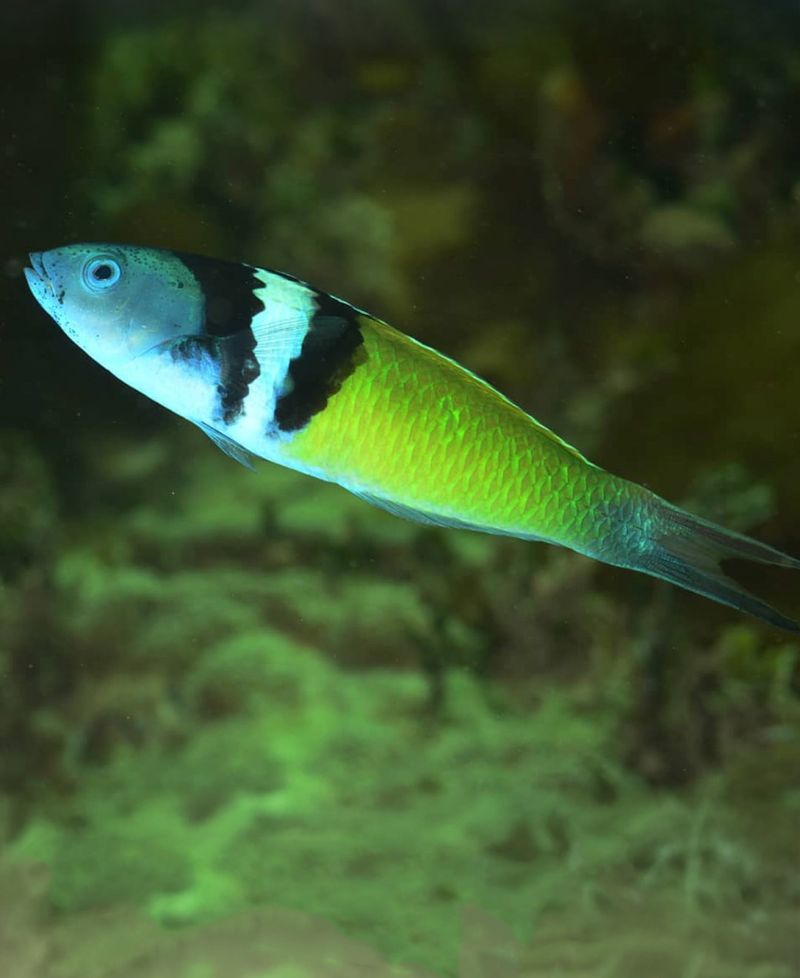
Dynamic dynamos of the reef, these fish are known for their vibrant colors and remarkable gender-changing abilities. Bluehead Wrasses can switch from female to male, ensuring population stability and genetic diversity.
Their striking blue heads and colorful bodies make them stand out, yet their social structure demonstrates impressive adaptability. These fish remind us that transformation is often about growth and change, an evolving dance in the vibrant coral reefs.
In their world, adaptability and resilience are essential for thriving in a constantly shifting environment.
25. Mandarinfish
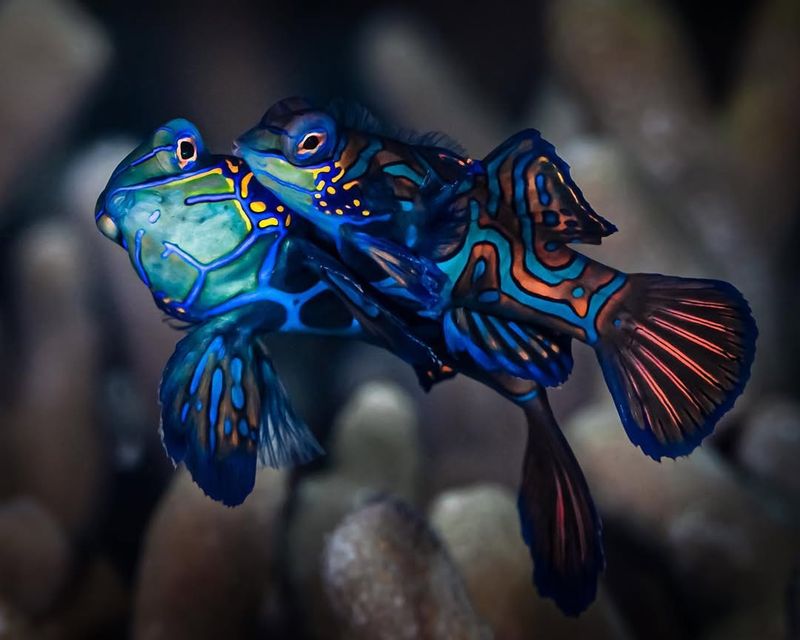
Mandarinfish are the psychedelic wonders of the reef, their bodies a living kaleidoscope of colors and patterns. These vibrant fish perform a nightly mating dance, a transformation of movement and beauty.
Their vivid hues warn predators of their toxicity, a vivid display of nature’s warning system.
Mandarinfish remind us that transformation can be a celebration of life and love, where every movement is a brushstroke in the grand artwork of the reef, dazzling those who witness their nightly performances with their splendor.
26. Goblin Shark
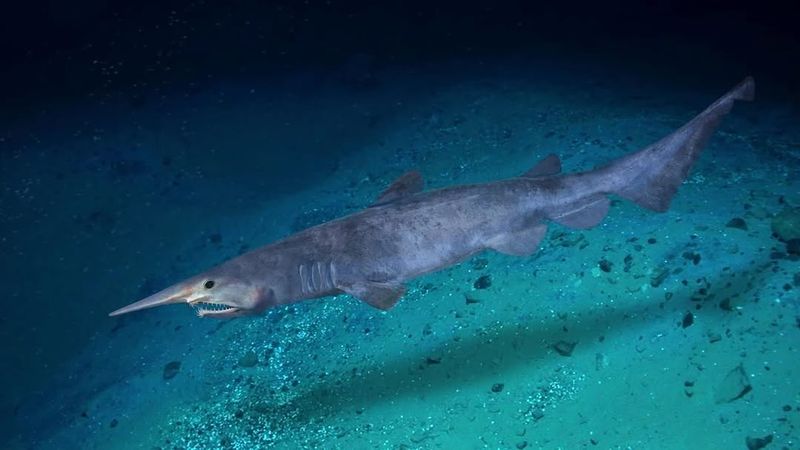
Deep-sea specters, these sharks possess a bizarre appearance that highlights the mysteries of the ocean’s depths. With their elongated snouts and protrusible jaws, they undergo a remarkable transformation when feeding, resembling something straight out of a sci-fi movie.
Their pinkish hue, caused by blood vessels close to the skin, is an adaptation to life in the deep sea. Goblin Sharks are living examples of how evolution has shaped creatures to thrive in extreme environments.
Their unique features make them one of the most fascinating and eerie inhabitants of the deep.
27. Squid
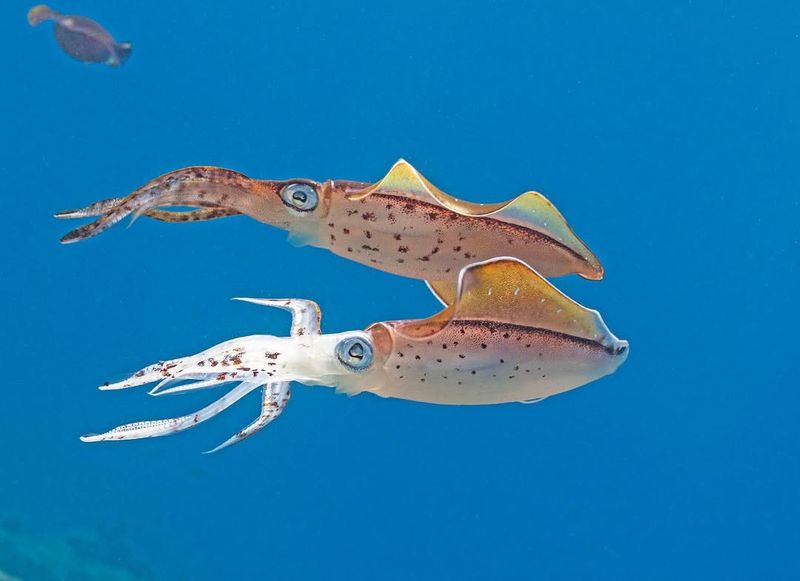
Agile acrobats of the sea, squids are masters of propulsion and camouflage. Their ability to change colors and patterns creates a mesmerizing display, used for communication, camouflage, and hunting.
With jet propulsion, squids can swiftly escape predators, showcasing how transformation can be both defensive and strategic. Their remarkable adaptability makes them one of the ocean’s most skilled and elusive creatures.
Squids remind us that change is not just for survival, but also a powerful tool for thriving in the deep sea.
28. Tuatara
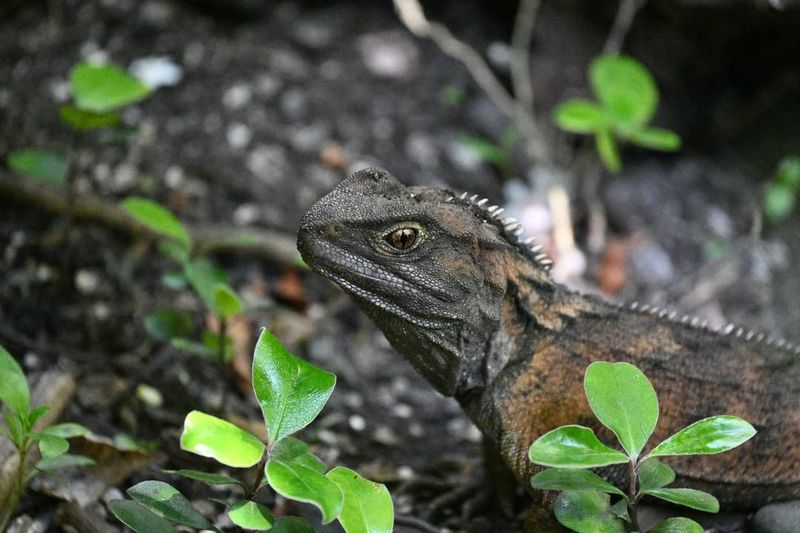
Tuatara are the living fossils of the modern world, their lineage tracing back to the age of dinosaurs. These reptiles, with their spiny crests and third eye, are a testament to nature’s enduring designs.
Their slow growth and ability to regenerate tails are transformations that have helped them survive for millions of years.
Tuatara remind us that transformation can be about endurance and legacy, where ancient wisdom meets modern survival, a bridge between past and present in the continuous journey of life.
29. Stonefish
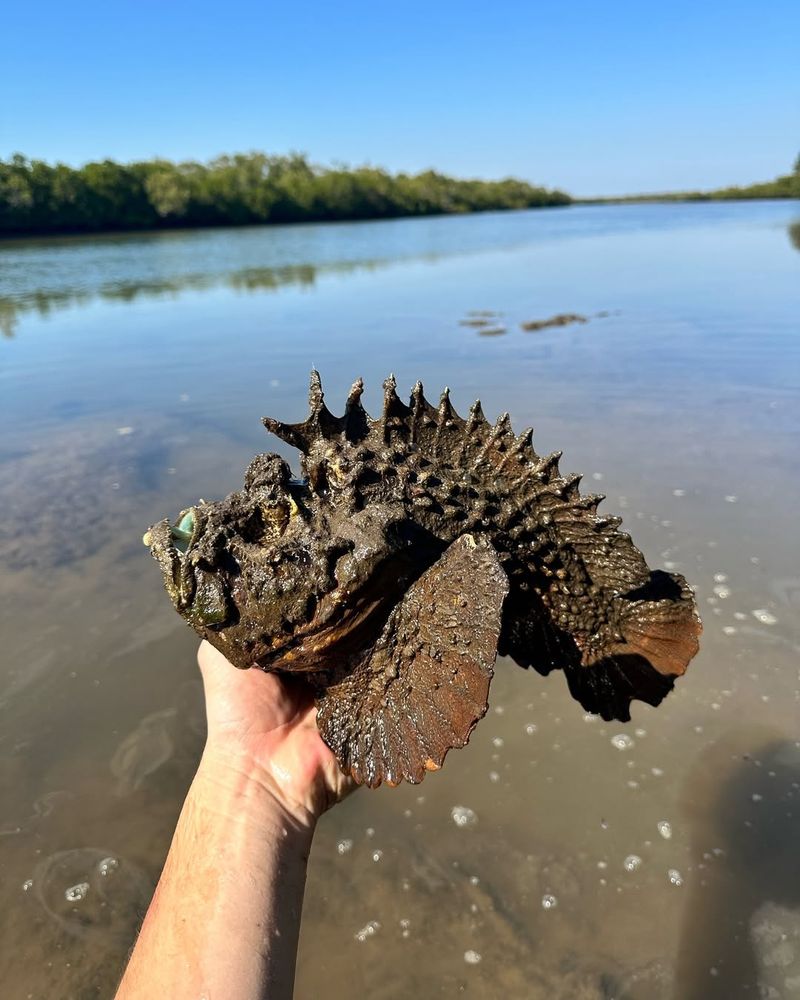
Stonefish are the masters of disguise, their warty bodies and stone-like appearance allowing them to blend seamlessly into rocky seabeds. This camouflage is a deadly transformation, as they are among the most venomous fish in the world.
Their ability to remain motionless makes them effective ambush predators.
Stonefish remind us that transformation can be about patience and stealth, where stillness becomes a powerful strategy in the underwater battlefield, a reminder that the ocean’s beauty often comes with a hidden sting.
30. Gobies
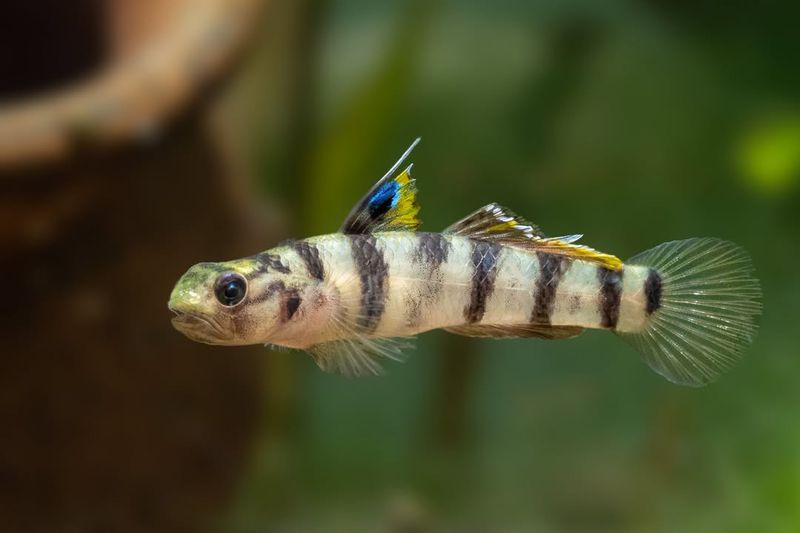
Gobies are the pint-sized powerhouses of the reef, their small stature hiding a world of adaptability and transformation. These fish form symbiotic relationships with shrimp, sharing burrows and benefiting from mutual protection.
Gobies can change colors to blend with their environment or signal social cues. Their transformation abilities highlight the importance of cooperation and adaptability.
Gobies demonstrate that even the smallest creatures have a role to play, where transformation is about connection and community in the vibrant underwater world.
31. Argonaut
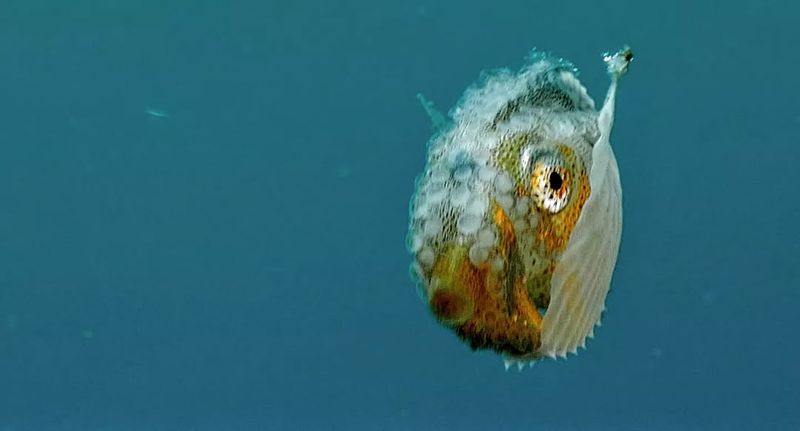
The ocean’s graceful wanderers, Argonauts are known for their paper-thin shells, a delicate marvel of nature. These floating octopuses undergo a unique transformation, with females secreting shells to protect their eggs.
Their elegant dance near the water’s surface highlights the beauty of adaptation in the marine world. This transformation not only serves as protection but also as a remarkable survival strategy.
Argonauts remind us that nature’s elegance and innovation often go hand in hand in the quest for survival.
32. Snipefish
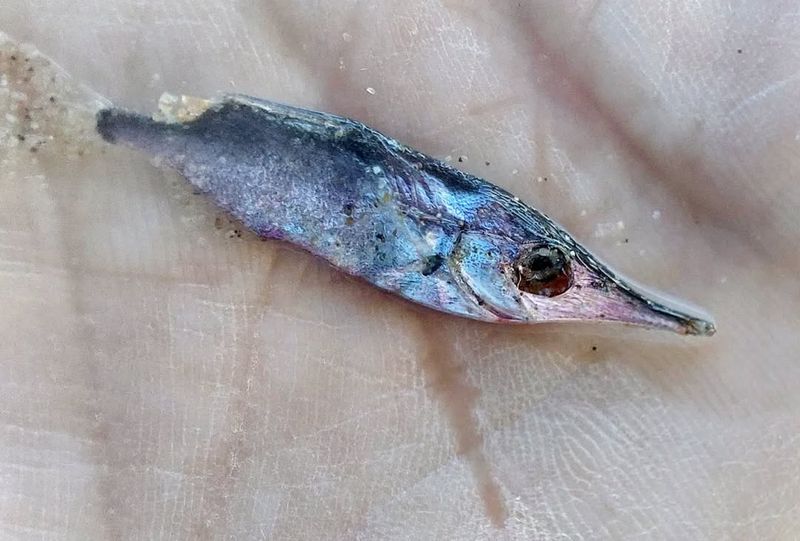
Elongated enigmas of the reef, Snipefish have tubular snouts and slender bodies that help them blend seamlessly with coral. This transformation enables them to hide from predators and silently approach their prey.
Their unique body shape, coupled with their schooling behavior, creates a mesmerizing display of synchronized movement and unity. Snipefish thrive in the coral environment, using their camouflage for both defense and hunting.
Their ability to adapt to their surroundings showcases the elegance of survival in the underwater world.

